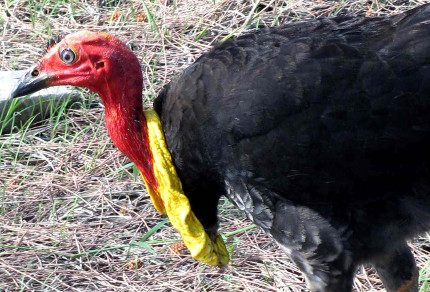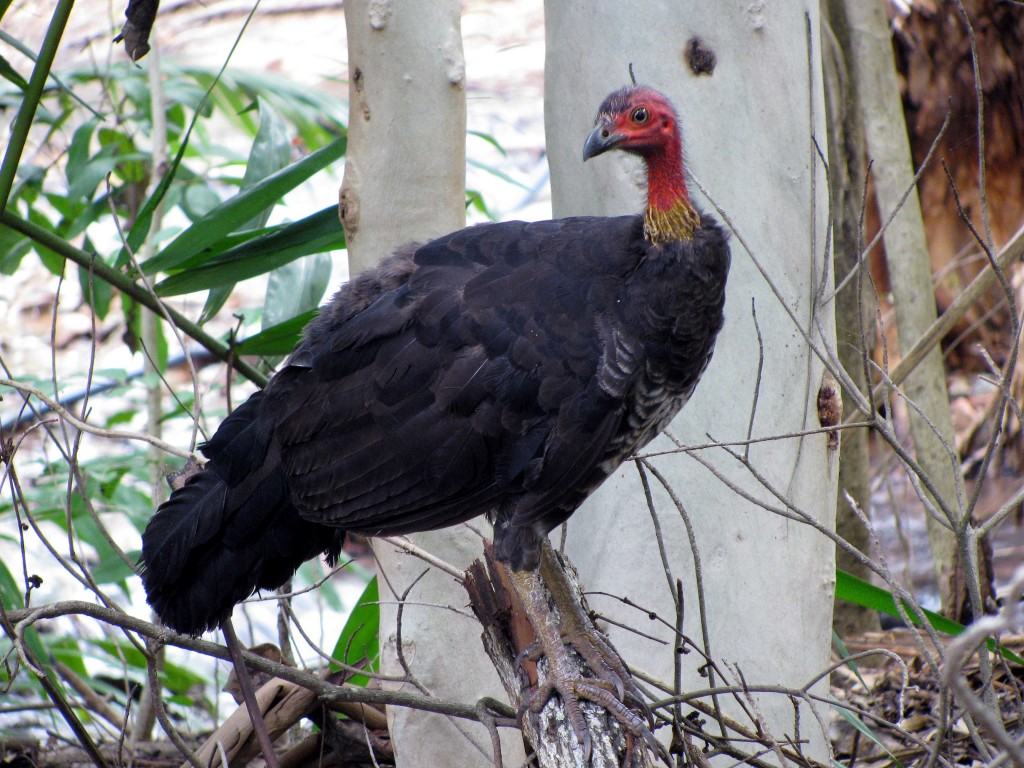
Immature Australian Brush-turkey (© Magi Nams)
In the avian world, the term ‘big foot’ bears no relation whatsoever to the mythical sasquatch of the Pacific northwest, but rather refers to the Megapodiidae (mega = big; pod = foot), an intriguing family of a dozen bird species known generally as mound builders.1 They occur throughout the Australasian region, from Nicobar Island in the Bengal Sea east to the Philippines, and from southern Australia north to Borneo.1 All are chicken-like birds with small heads and large, strong feet, the latter used to scatch together metres-wide mounds of forest detritus combined with soil or sand, these mounds used by the birds as incubators for their eggs.1
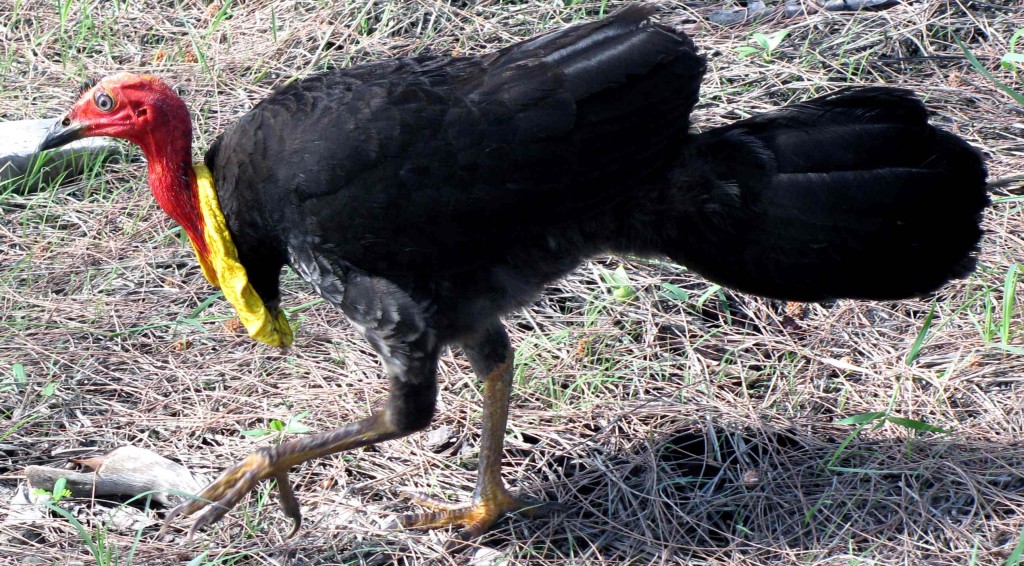
Male Australian Brush-turkey (© Vilis Nams)
Australia is home to three mound builders, the Australian brush-turkey, malleefowl, and orange-footed scrubfowl. The brush-turkey is the largest of the three (60-70 cm), a striking black bird with a red, bare head, yellow wattle, and sideways-flattened tail. Breeding males of this species possess large, dangling, bright yellow wattles which contrast with both their bright red heads and black bodies. Brush-turkeys inhabit rainforests and woodlands from the northern tip of Queensland south along Australia’s east coast to southern New South Wales.1
I first spotted brush-turkeys at the rainforest edge in Dorrigo National Park, northern New South Wales, where several birds darted out from tangled vegetation to scrounge for food on a lawn dotted with picnic tables. Vilis and I frequently observed brush-turkeys in parks, yards, and forests in eastern Queensland. At James Cook University in Townsville, I watched a male brush-turkey enlarge a two-metre incubation mound by scratching leaves onto it, and near Alligator Creek in Bowling Green Bay National Park, I saw a brush-turkey resting atop a mound. Only later did I wonder if it was a female laying eggs.
Malleefowl (55-60 cm) inhabit gum forests, coastal heaths, and paperbark, mallee, she-oak, and acacia scrub on sandy or gravely soils in a band from southern Western Australia east into New South Wales. These mound builders scratch up a sand mound with a crater in its top, which they fill with leaves. Once eggs are laid in the leaves, malleefowl cover them with a layer of sand.1
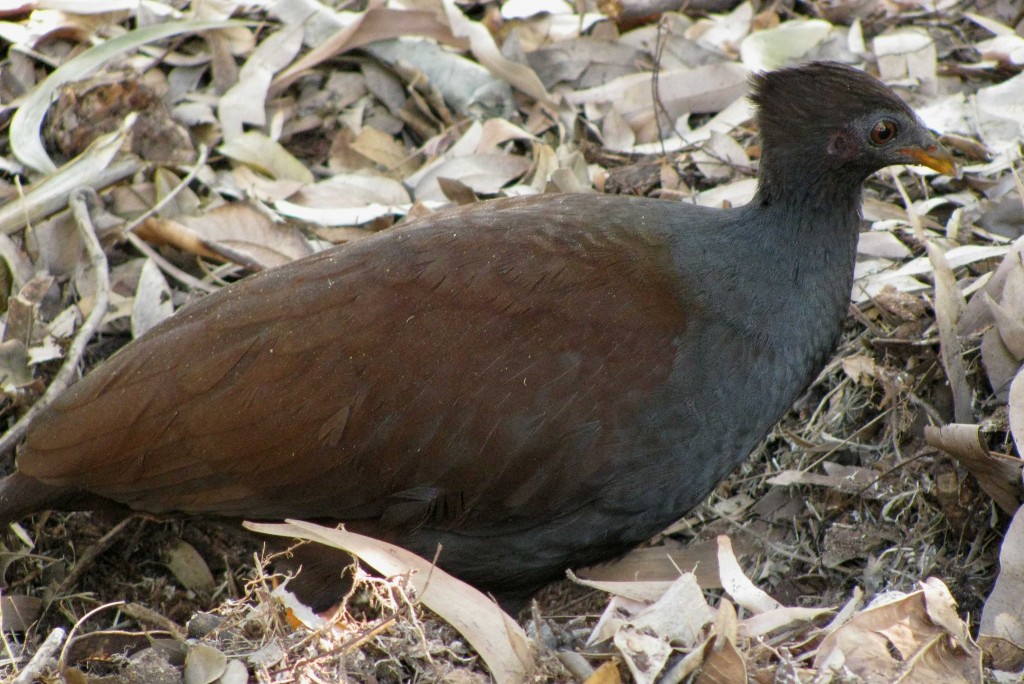
Orange-footed Scrubfowl (© Magi Nams)
The smallest of Australia’s mound builders, the orange-footed scrubfowl (40-50 cm), inhabits rainforests, mangroves, and vine scrub along the north coast of Australia.1 Vilis and I first observed an orange-footed scrubfowl scratching and pecking at litter in Queens Gardens in Townsville, but in later months also spotted these mound builders on Magnetic Island and in Daintree National Park. Scrubfowl pile soil and vegetation into mounds as large as 3 metres high and 12 metres wide.1 Vilis and I found a large mound in the Daintree and thought it may have belonged to orange-footed scrubfowl, since we saw several in the vicinity.
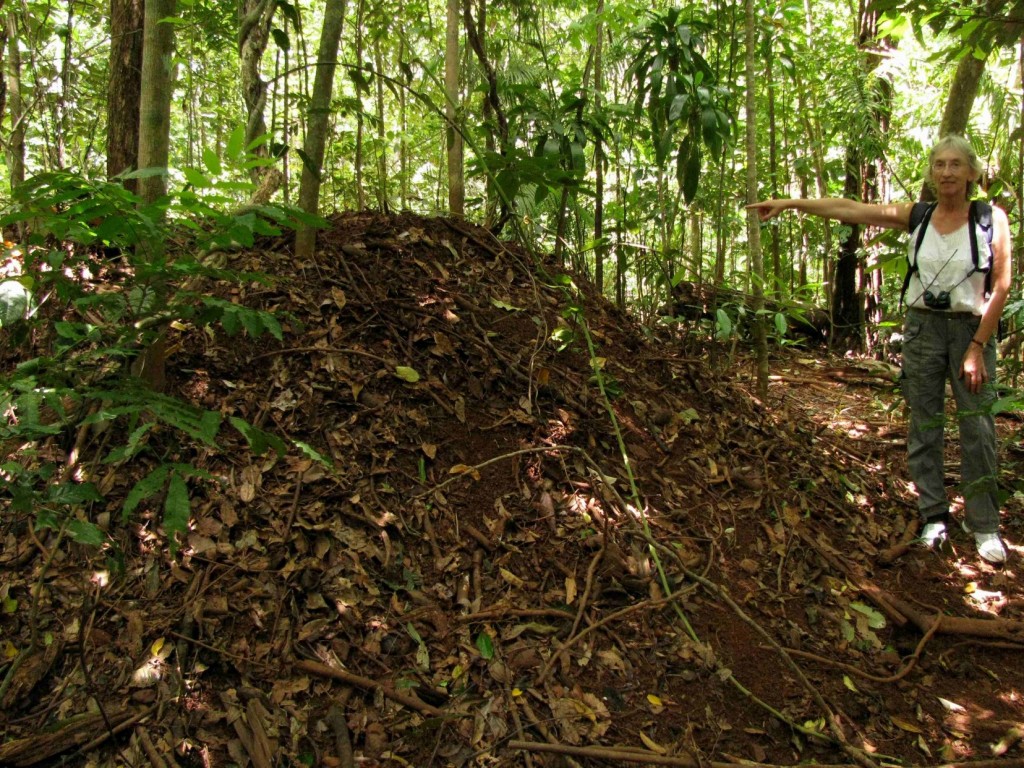
Here I am beside an incubation mound in Daintree National Park (© Vilis Nams)
Mound builders don’t themselves incubate their eggs, but rather let the rapid, heat-releasing tropical decomposition of forest detritus do the job for them. Females lay a dozen or more fragile-shelled eggs in the mounds, and male birds regulate ventilation and the temperature of the mounds at around 33-35°C by adding or removing vegetation or sand.1 When ready to hatch (after 7 weeks for brush-turkey eggs1), megapode chicks use their clawed feet to scratch open the egg shells, then scratch their way to the mound’s surface. They’re the most mature of any bird species upon hatching from the egg. Fully feathered, they can run, feed themselves, and even fly within a day of hatching. Scientists call them superprecocial. I call them amazing!
1. Graham Pizzey and Frank Knight. The Field Guide to the Birds of Australia. 2000. Angus & Robertson, Sydney, pp. 20-21, 521.

